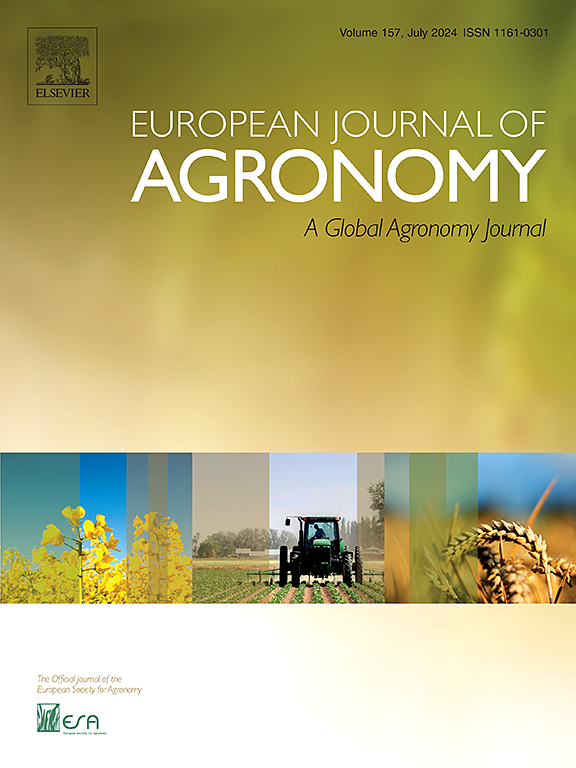利用变压器和迁移学习进行番茄叶病的早期检测
IF 5.5
1区 农林科学
Q1 AGRONOMY
引用次数: 0
摘要
番茄是世界上最有价值的经济作物之一,也是全球美食中的主食,但它很容易受到各种病害的侵袭,如果不能及早发现,就会导致产量大幅下降,甚至可能损失整整一公顷的土地。变压器模型在图像识别(包括早期植物叶片病害检测)方面的性能有了显著提高。然而,它们在不同数据集和真实世界环境中的泛化能力仍不确定,因为它们通常是在类似的分布中进行训练的。而迁移学习能让模型从不同的分布中学习特征,从而增强其对新的真实世界数据的泛化能力。本研究提出了三种迁移学习方法(ViT-ImageNet、ViT-Base 和 ViT-Small),用于从图像预测番茄叶片疾病。该数据集包括来自 Dikumari、Kukareta 和 Kasaisa 农场的子集,以反映不同的环境条件。实验结果表明,ViT-Base 模型在 PlantVillage 数据集上达到了 99.17% 的最高准确率,在 Dikumari 子集上达到了 77.27% 的最高准确率,而 ViT-Small 模型在 TomatoEbola 数据集的 Kukareta 子集上达到了 92.73% 的最高准确率,在 Kasaisa 子集上达到了 91.54% 的最高准确率。这些结果优于 VGG19、EfficientNetB2、InceptionV3 和 DMCNN 等最先进的方法,这些方法的准确率通常低于 90%。此外,与最先进的深度学习方法相比,所提出的方法大大增强了对环境变异的鲁棒性,最多可将错误率降低 47%。这些发现凸显了所提方法的有效性和可推广性,使其成为番茄叶片病害早期诊断和管理的一种有价值、可持续的工具。本文章由计算机程序翻译,如有差异,请以英文原文为准。
Early detection of tomato leaf diseases using transformers and transfer learning
Tomato, one of the world’s most valuable cash crops and a staple in global cuisine, is susceptible to various diseases that, if not detected early, can lead to significant yield declines and the potential loss of entire hectares. Transformer models have shown substantial performance improvements in image recognition, including early plant leaf disease detection. However, their ability to generalise across different datasets and real-world settings remains uncertain, as they are often trained within similar distributions. Transfer learning, however, enables a model to learn features from a different distribution, enhancing its ability to generalise to new, real-world data. This study proposed three transfer learning approaches (ViT-ImageNet, ViT-Base, and ViT-Small) to predict tomato leaf diseases from images. The proposed methods were evaluated on the widely used PlantVillage dataset and a newly collected dataset, TomatoEbola, which includes subsets from Dikumari, Kukareta, and Kasaisa farms to reflect various environmental conditions. Experimental results demonstrated that the ViT-Base model achieved the highest accuracy of 99.17 % on the PlantVillage dataset and 77.27 % on the Dikumari subset, whereas the ViT-Small model achieved the highest accuracy of 92.73 % on the Kukareta subset and 91.54 % on the Kasaisa subset of the TomatoEbola dataset. These results outperform state-of-the-art methods such as VGG19, EfficientNetB2, InceptionV3, and DMCNN, which typically achieved accuracies below 90 %. Furthermore, the proposed approaches significantly enhanced robustness to environmental variability, reducing error rates by up to 47 % compared to state-of-the-art deep learning methods. These findings highlight the effectiveness and generalizability of the proposed approach, making it a valuable and sustainable tool for early diagnosis and management of tomato leaf diseases.
求助全文
通过发布文献求助,成功后即可免费获取论文全文。
去求助
来源期刊

European Journal of Agronomy
农林科学-农艺学
CiteScore
8.30
自引率
7.70%
发文量
187
审稿时长
4.5 months
期刊介绍:
The European Journal of Agronomy, the official journal of the European Society for Agronomy, publishes original research papers reporting experimental and theoretical contributions to field-based agronomy and crop science. The journal will consider research at the field level for agricultural, horticultural and tree crops, that uses comprehensive and explanatory approaches. The EJA covers the following topics:
crop physiology
crop production and management including irrigation, fertilization and soil management
agroclimatology and modelling
plant-soil relationships
crop quality and post-harvest physiology
farming and cropping systems
agroecosystems and the environment
crop-weed interactions and management
organic farming
horticultural crops
papers from the European Society for Agronomy bi-annual meetings
In determining the suitability of submitted articles for publication, particular scrutiny is placed on the degree of novelty and significance of the research and the extent to which it adds to existing knowledge in agronomy.
 求助内容:
求助内容: 应助结果提醒方式:
应助结果提醒方式:


